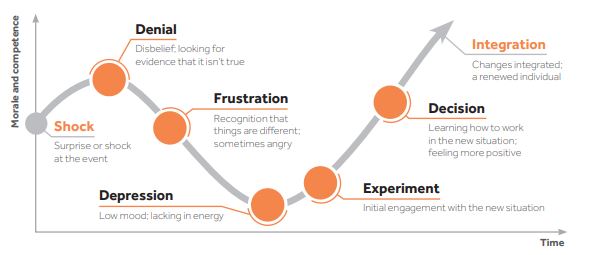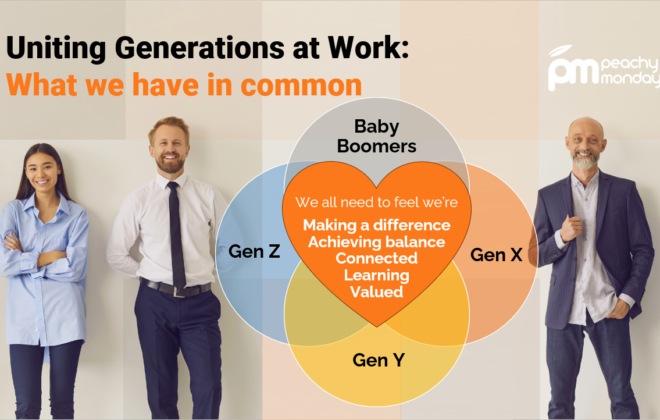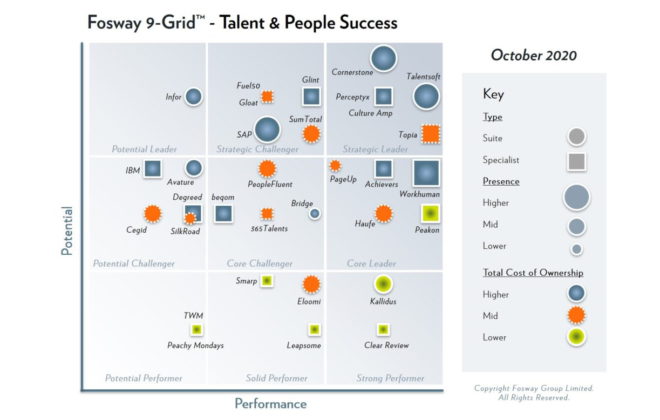How managers can support employees through change
Change is a constant. At Peachy Mondays, many of our clients initially engage us because they are about to embark upon a major period of change and transformation.
Successful transformation requires changes to culture and behaviour as well as changes to structure, systems and processes. Involving employees in transformation, listening to and acting on their feedback, makes it more likely that change will be adopted.
There’s another key ingredient to a successful change programme: engaging managers. Managers are the crucial link between the workforce and leadership and, as such, have a critical role in making lasting change happen. And they may require targeted support and tools to help them help their teams adjust to change. More on this later.
Measure and understand employee sentiment
A well designed employee feedback strategy can help you to understand employee sentiment towards the change and assess how well the change is being embedded. We use the Kübler-Ross model. It has been adapted over the years and is based on the emotions that people experience following loss; from anger to acceptance.
Since adapting to change can involve loss to a lesser or greater extent – loss of competence, status, security – the model is a helpful way of monitoring how employees are coping with change at any given time.
Employees progress through the model at different rates, and equally can move backwards and forwards when faced with new issues and challenges.

How does this help managers?
The Peachy Mondays platform measures employee sentiment towards change and then prompts managers to take appropriate action using ‘intelligent nudges’. Each ‘nudge’ is designed to support employees and accelerate their progress through the change curve.
So, how can managers spot where employees are on the change curve and how best can they support them?
Shock: Employees are feeling surprised and unsure about their future
- Acknowledge and restate what employees are feeling, demonstrate that you understand that change can be painful
- Reinforce policies, processes and structures that will remain to provide an anchor/security for employees
- Honour the past. Respect how things were done. Statements belittling past methods can cause bad feeling and undermine new ways of working.
Denial: Employees are in disbelief; they may be openly stating that change will not happen and/or looking for evidence to support their view
- Clearly explain the goal of the change; repeat as necessary
- Be open and honest; share information where you can. Where information is not available or cannot be shared, give reasons why and indicate when you may be able to
- Don’t overshare – stick to what is necessary to get the job done
- Appeal to logic; show why the change is being made. What has happened that has made change necessary? How will the change positively impact the organisation and employees?
Frustration: Employees may be openly hostile towards the change and actively opposing it. They may be finding it difficult to adopt new ways of working or frustrating trying to navigate new rules of engagement
- Play back what is being said by employees and acknowledge their feelings. Demonstrating that you are listening and are aware of their concerns helps to defuse anger
- Ensure there are opportunities for two-way communication, individually and as groups, to further alleviate feelings of not being understood and heard. Anger is often the result of feeling vulnerable so ensure there is a supportive environment
- When faced with active opposition, gently but firmly restate the case for change.
Depression: During this stage, employees may be withdrawn and unfocused, failing to take any steps to prepare for change. They may lack confidence
- Ensure that employees have opportunities to ask questions and get involved in change. Clarify issues so employees do not feel as if they are in the dark and their opinion doesn’t matter
- Make heroes of the early adopters; show that change is possible and desirable, providing an incentive for others to follow in their footsteps
- Appeal to hearts as well as minds. Find early successes that demonstrate the benefits of the change so employees are inclined to move forward.
Experiment: During this stage, employees are curious and are beginning to try new ways of working
- During the experiment phase, a manager’s role is to encourage employees to try new ways of working
- Ask employees what action they need to take to ensure success
- Agree specific objectives and actionable goals for employees to work hard towards
- Challenge employees to think about what the change means for them in their role. What needs to change?
- Provide employees with support and signpost available tools and change resources
- Treat failures as opportunities to learn from rather than mistakes.
Decision: Employees are learning how to work in new ways; embracing new ideas and procedures and feeling more positive and competent
- Use feedback and monitoring systems to ensure change is being adopted and identify and resolve any issues
- Make change stick by embedding new ways of working in policies, processes and systems
- Recognise teams who embrace the change and adapt it into their function. Consider providing public recognition for teams who have eagerly embraced the change process.
Integration: Change is implemented and employee morale and competence is restored
- Make change stick by embedding new ways of working in policies, processes and systems.
If you’d like to learn more about how Peachy Mondays can help you to understand and support employees through change, get in touch.
Related Posts
Categories
- Case Study (13)
- Change and transformation (21)
- Connectedness (4)
- Culture (17)
- Design (10)
- Diversity and Inclusion (1)
- Effectiveness (16)
- Employee engagement (60)
- Employee experience (43)
- Employee Feedback (51)
- Employee Wellbeing (1)
- Events (10)
- Financial Wellbeing (1)
- Happiness (4)
- Internal Communications (10)
- News (24)
- Onboarding (1)
- Organisational Effectiveness (18)
- Uncategorized (3)




